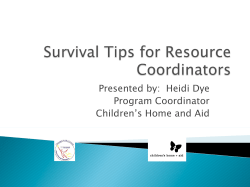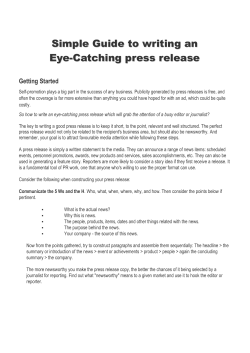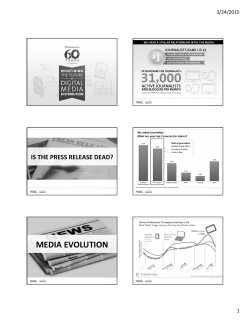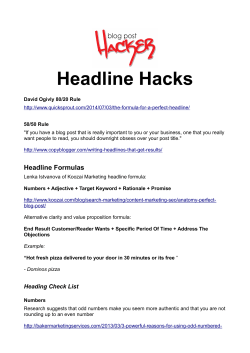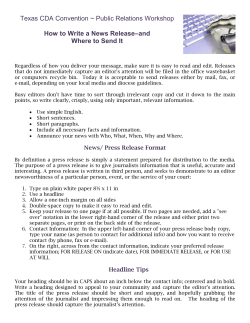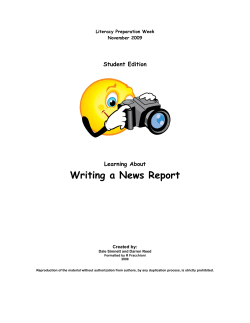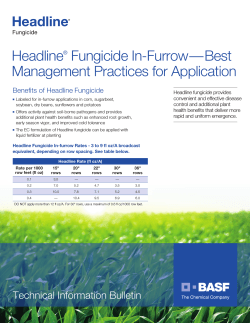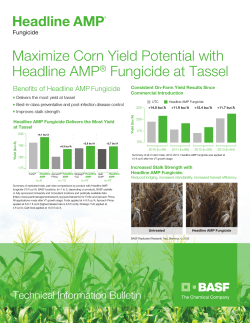
Challenge Corporate Power RAN.org How to Write Media Advisories and Releases
Challenge Corporate Power
RAN.org
How to Write Media Advisories and Releases
(Adapted from Salzman’s "Making the News" and SPIN Project Materials)
What’s the difference between a media advisory and a media release?
A media advisory functions as a "teaser" that alerts journalists to an upcoming
event; a release should contain all the information a reporter needs to write their
piece. If you gave a reporter a release a couple days before your event instead of
an advisory, she would have all the information she needed and wouldn’t have to
come to your event at all!
A MEDIA ADVISORY:
•
•
Gives basic information: who, what, where, when and why.
Is sent out a few days before the event so a reporter can plan on coming.
Elements
•
•
•
•
•
•
•
Headline. This will make or break the advisory—include the most
important information in the headline, and make it punchy. The headline
can be up to four lines if necessary, including a sub-head, if used, but
keep it short (and remember to use a large font – it’s eye-catching!).
Short description of the event and the issue. Make it visual ("Citizens will
carry large placards and life-size puppets to the Governors Mansion to
protest the latest cut in education funding.")
List the speakers at your event.
Include a quote from somebody from your organization who works on the
issue. This quote should be the main message that you are trying to
convey to the press, and in extension, to the public. Therefore, it should
be clear, well thought out and strategic.
Contact information. In the top right corner, type names and phone
numbers of two contacts. Make sure these contacts can be easily reached
by phone. Include the contact’s home phone number, if appropriate.
Include a short summary of your organization in the last paragraph.
Mention "Photo Opportunity" if one exists and be sure to send it to the
photo editors of local news outlets as well as to reporters – they don’t
always share information with each other!
Structure / Form
•
•
In the top left corner, type "Media Advisory."
Beneath "Media Advisory," type the date.
Challenge Corporate Power
RAN.org
•
•
•
Type "###" at the end of your advisory. This is how journalists mark the
end of copy.
Type "MORE" at the end of page 1 if your advisory is two pages, and put a
contact phone number and short headline in the upper-right hand corner
of subsequent pages.
Print your advisory on your organization’s letterhead.
How to distribute it
•
•
•
A media advisory should arrive at news outlets 3 to 5 working days before
the event.
Fax, email or mail (if time permits) your advisory to the appropriate
reporter, editor or producer at each news outlet on your press list.
If your region has a "daybook" (you can find out by calling the newsroom
of your largest local newspaper) be sure to submit your advisory and ask
them to put your event in the daybook or calendar. A daybook lists news
events scheduled to take place in the region on that day. Major news
outlets review the daybooks each morning.
ALWAYS make follow up calls the day before your event, and have the
advisory ready to be faxed.
A MEDIA RELEASE:
•
•
•
•
Informs reporters about your event, report, or issue.
More detailed than the advisory—should tell all the information a reporter
needs to write their piece.
Envision, then write the press release as the news story YOU would want
to see written.
Sent out the morning of or the day before the event.
Elements
•
•
•
Headline. This will make or break a news release—include the most
important information in the headline, and make it punchy. The headline
can be up to four lines if necessary, including a sub-head, if used, but
keep it short (and remember to use a large font).
Important information should jump off the page—most reporters will only
spend 30 seconds looking at a release.
Spend 75 percent of your time writing the headline and the first paragraph.
Use the inverted pyramid style of news writing. Make your most important
points early in the release and work your way down.
Keep sentences and paragraphs short. No more than three sentences per
paragraph.
Challenge Corporate Power
RAN.org
•
•
•
Include a colorful quote from a spokesperson in the second or third
paragraph.
Include a short summary of your organization in the last paragraph.
Mention "Photo Opportunity" if there is one. Be sure to send a copy of the
release to the photo desk.
Structure / Form
•
•
•
•
•
•
In the top left corner, type "For Immediate Release."
Below "For Immediate Release," type the date.
Contact Information: In the top right corner, type names and phone
numbers of two contacts. Make sure these contacts can be easily reached
by phone. Including the contact’s home phone number, if appropriate.
Type "###" at the end of your release. This is how journalists mark the end
of a news copy.
Type "MORE" at the end of page 1 if your release is two pages, and put a
contact phone number and short headline in the upper-right hand corner
of subsequent pages.
Print your release on your organization’s letterhead.
How to Distribute It
•
•
•
•
A release should be sent out the morning of, or the day before your event.
In some cases, you may want to send an "embargoed" copy to select
reporters ahead of time, meaning that the information is confidential until
the date you specify, but it allows a trusted reporter to get an early start on
writing.
If your release announces an event, send it to the "daybooks." A daybook
lists news events scheduled to take place in the region on that day.
Someone from each major outlet reviews the daybooks each morning.
ALWAYS make follow up calls after you send the release. If your
release is announcing an event, make the calls the morning before
your event is scheduled.
Have a copy of the release ready to be faxed when you make the calls.
© Copyright 2025
